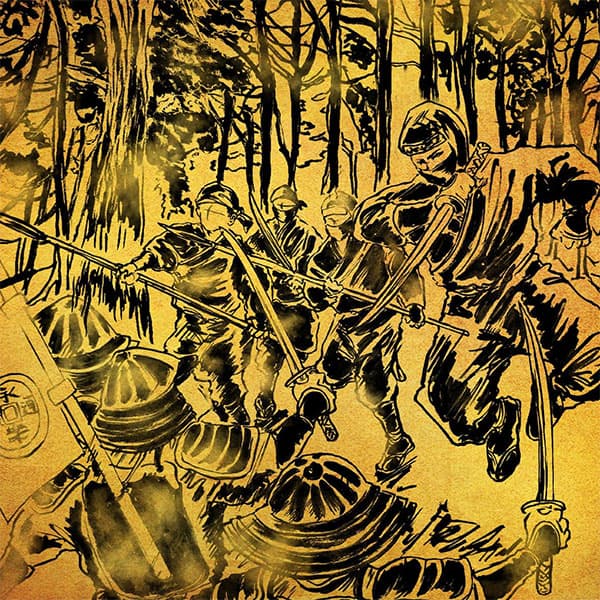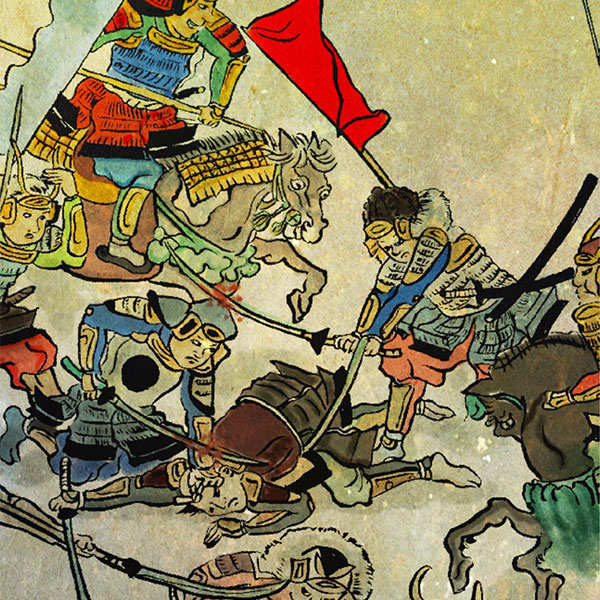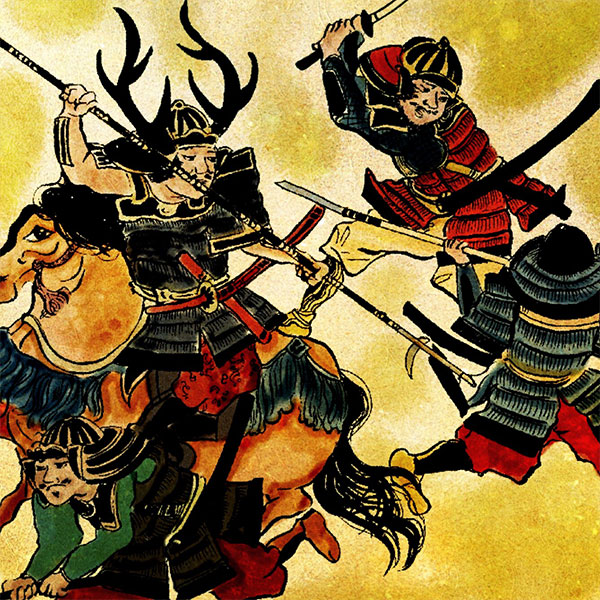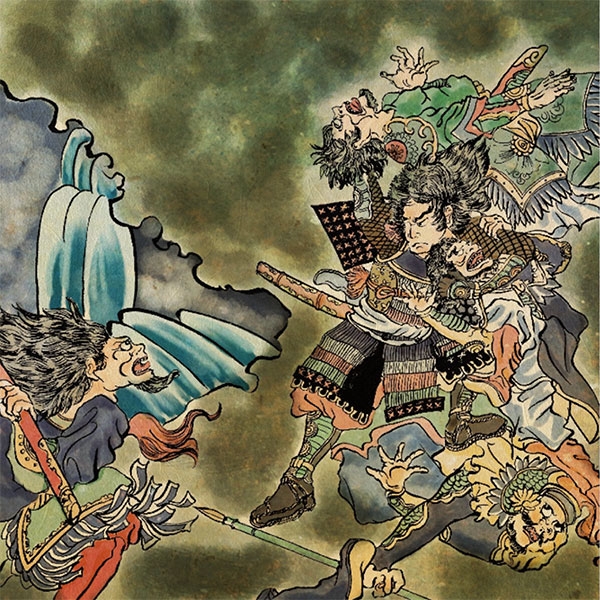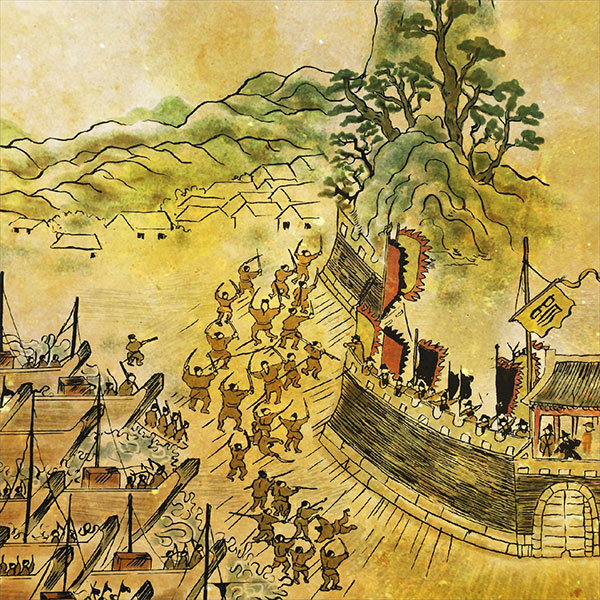Takatora Todo (1/2)A master of castle construction who served many lords.
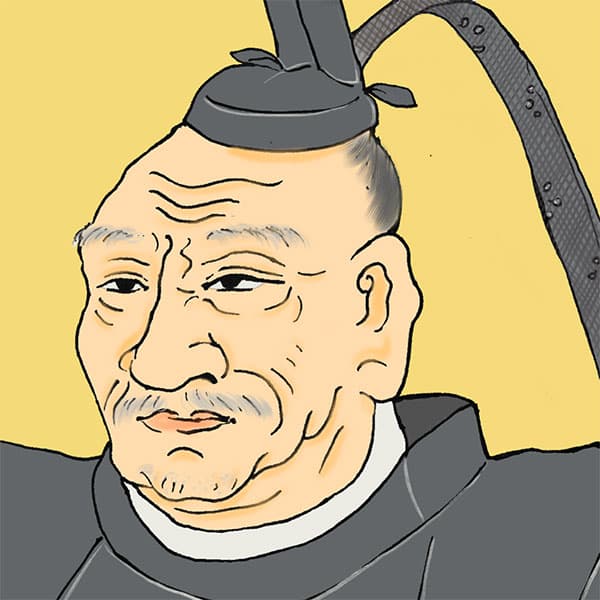
Takatora Todo
- Article category
- biography
- name
- Todo Takatora (1556-1630)
- place of birth
- Shiga Prefecture
- Related castles

Tsu Castle

Iga Ueno Castle

Uwajima Castle
Existing castle tower
Imabari Castle

Ozu Castle
Todo Takatora was born in 1556 in Todo Village, Inukami Gun, Omi Province (Shiga Prefecture) as the second son of Todo Takatora. His childhood name is Yokichi.
His father, Torataka, was born as the second son of Noritsuna Mitsui, who was the lord of Nazue Castle in Omi, but when he was young he left Omi to serve Nobutora Takeda (father of Shingen Takeda) in Kai (Yamanashi Prefecture). However, when he causes mismanagement in the Takeda family, he runs away. When he returned to Omi, he became the son-in-law of Todo Tadataka.
The Todo family was a wealthy local in Inukami District, Omi, so they served the Kyogoku clan, the feudal lords of their area, and then the Asai clan.
Takatora Todo grew up in such an environment. When he grew up, he became a strong man with a height of 6 shaku and 2 sun (approximately 190 cm), and like his father, he started his career as a samurai by serving the Asai clan.
Where did Takatora serve when he was young?
First, let's talk about Mr. Asai, the first person I served. The Asai clan was a feudal lord who ruled Kita-Omi (northern Shiga prefecture) at the time. A famous military commander from the Azai clan is Nagamasa Asai, whose wife was Oda Nobunaga's sister (Oichi).
The surrounding feudal lords were the Rokkaku clan of Minami-Omi (southern Shiga Prefecture), the Asakura clan of Echizen Province (Reihoku, Fukui Prefecture), and Oda Nobunaga, who was expanding his influence in Owari Mino (Gifu Prefecture, western Aichi Prefecture). We maintained a good relationship. However, in June 1570, the Asai clan was defeated by Oda Nobunaga at the Battle of Anegawa, and the clan began to decline. After that, it perished in the first year of Tensho (1573).
Just before the Asai clan fell, Takatora gave up on the Asai family and ran away. Afterwards, he served Omi people such as Sadayuki Akei and Kazumasa Isono, who were former retainers of the Asai clan, but this did not last long and he ran away from the Isono clan again.
After leaving Omi, he served Oda Nobunaga's nephew, Tsuda Nobuzumi, but he did not last long here either.
What were the official circumstances at the time?
At that time, samurai who served feudal lords and local feudal lords were in a buyer's market, changing their masters depending on their abilities.
- I can't see any future in the daimyo I work for.
- Not receiving fair evaluation and low salary
- I don't fit in with my surroundings. I don't get along with my master. It doesn't suit the family style.
If I was not satisfied with the position for various reasons, I would change my position.
They placed so much importance on the relationship between their subordinates and their master that it was said that ``You can't call yourself a samurai unless you change your master seven times,'' and it was not uncommon for them to change their master.
Like other samurai, when Takatora was young, he was probably looking for a master who recognized his worth and whom he could serve with satisfaction.
Where Takatora calmed down
It was around the age of 20, in 1576, that Todo Takatora began to seriously settle down.
It was after he started serving Hashiba Hidenaga, the younger brother of Hashiba Hideyoshi (later Toyotomi Hideyoshi), who was a subordinate of Oda Nobunaga. Initially, you will start serving with 300 koku chigyo. Although he was late in the ranks, he achieved success under Hashiba Hidenaga's tutelage in order to match Hashiba Hideyoshi's success.
In 1581, he became one of the top gun generals. In the wake of this, in 1585 he achieved great military exploits in the conquest of Shikoku. As a result, the Chigyochi given to him achieved remarkable success with 10,000 koku.
Also, as he rose through the ranks, the orders he was given were no longer limited to fighting. He was also ordered to undertake the construction of castles, and in 1585 he was ordered to construct Saruokayama Castle and Wakayama Castle. This was the first castle built by Takatora, who was later hailed as one of the three great castle builder masters (Kanbei Kuroda, Kiyomasa Kato, and Takatora Todo).
Before his death, Takatora had built Uwajima Castle, Imabari Castle, Sasayama Castle, Tsu Castle, Iga Ueno Castle, Zeze Castle, Nijo Castle, and other castles. The castle built by Takatora is notable for its high stone walls and moat design. The castle-building methods of Kiyomasa Kato, who was also hailed as a master of castle construction, were characterized by the fact that he added warps to the stone walls called ``musha-gaeshi'' and ``fan slope,'' so the castle-building methods of these two men were contrasted. Masu.
The death and aftermath of my lord, Hidenaga Hashiba
Takatora's lord, Hidenaga Hashiba, died of illness in 1591. Hidenaga's successor was his adopted nephew Hashiba Hideyasu (Toyotomi Hideyasu), and Takatora continued to serve in the government. However, in 1595, Hideyasu also passed away due to illness. The lineage of Hidenaga Hashiba has disappeared.
After Hideyasu died, many of the vassals who had served Hidenaga and Hideyasu ended up serving Toyotomi Hideyoshi.
However, Takatora resigned from the Toyotomi family and became a priest. He became a monk and holed up on Mt. Koya to mourn Hidenaga and Hideyasu. However, Toyotomi Hideyoshi, who was disappointed in Takatora's military talent, persuaded him through Chikamasa Ikoma. Takatora also gave in to this persuasion and returned to secular life again, receiving Iyoita Island (currently Uwajima City, Ehime Prefecture) as a daimyo with 70,000 koku. It was the moment when Takatora, a well-known lord who fought his way through battles, became a feudal lord who owned a castle.
What is Takatora's personality?
Todo Takatora became a daimyo under the Toyotomi family in 1595. In later years, he became a feudal lord with a wealth of 320,000 koku, mainly in Tsu (Tsu City, Mie Prefecture).
Takatora was characterized by the fact that the core of his territory management was established by his blood relation, the Todo family.
This is because his father, Torataka, was a wealthy local in Omi, and Torataka himself lived a long life (passed away at the age of 84) and was blessed with many brothers and sisters (half-brothers and sisters). As Takatora increased his territory under Hidenaga Hashiba, he probably brought in close relatives and made them work under him, forming the Takatora family.
However, Takatora actively recruits talent not only from within his family but also from outside the clan.
He rescued the children of the Asai clan, Kazumasa Isono's children, Nobusumi Tsuda's children, and other children of masters who served in the government when they were young, and spared their lives. From these episodes, it seems that he had a strong sense of duty. This character has been highly praised by the public since then, and many military commanders have served under Takatora.
Subordinates welcomed after the Battle of Sekigahara
In 1600, the feudal lords who opposed the Tokugawa side were defeated in the Battle of Sekigahara, and a large number of unemployed samurai filled the city as ronin. Daimyo tried to incorporate talented military commanders who became ronin into their vassals and use them to develop their own families. Takatora also welcomed many military commanders. After the Battle of Sekigahara, the following military commanders became Takatora's vassals.

- WriterTomoyo Hazuki(Writer)I have loved history and geography since my student days, and have enjoyed visiting historical sites, temples and shrines, and researching ancient documents. He is especially strong in medieval Japanese history and European history in world history, and has read a wide range of things, including primary sources and historical entertainment novels. There are so many favorite military commanders and castles that I can't name them, but I especially like Hisashi Matsunaga and Mitsuhide Akechi, and when it comes to castles, I like Hikone Castle and Fushimi Castle. Once you start talking about the lives of warlords and the history of castles, there's a side of you that can't stop talking about them.






